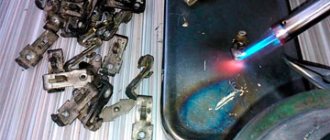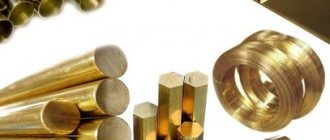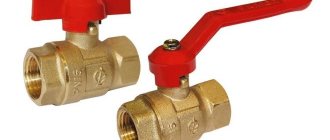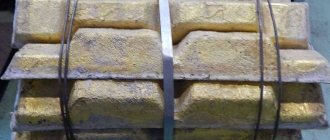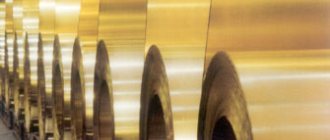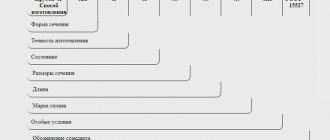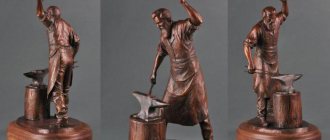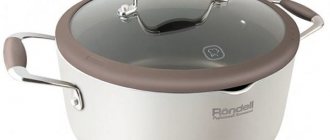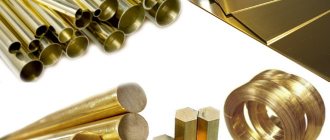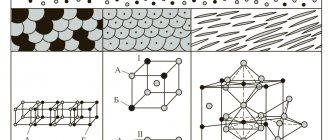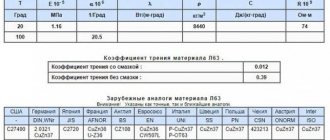Brass LO70-1 Brass LMtsA57-3-1 Brass LMtsAZhKS70-7-5-2-2-1 Brass LMtsZh57-1.5-0.75 Brass LMtsKA58-2-1-1 Brass LMtsKNS58-3-1.5-1 ,5-1 Brass LMtsKNSA58-3-1.5-1.5-1 Brass LMtsSKa58-2-2-1-1 Brass LMsh68-0.05 Brass LN65-5 Brass LNKMts49-10-0.3-0.2 Brass LNKoMts49-9-0.2-0.2 Brass LNMts60-9-5 Brass LO60-1 Brass LO62-1 Brass LKS65-1.5-3 Brass LO90-1 Brass LOK59-1-0.3 Brass LOMNA49-0 ,5-10-0.4-0.4 Brass LOMsh70-1-0.04 Brass LOMsh70-1-0.05 Brass LS58-2 Brass LS58-3 Brass LS59-1 Brass LS59-1V Brass LS59-2 Brass LS60 -1 Brass LS63-3 Brass LS64-2 Brass LS74-3 Brass LA85-0.5 Brass L59 Brass L60 Brass L63 Brass L66 Brass L68 Brass L70 Brass L72 Brass L75mk Brass L80 Brass L85 Brass L90 Brass L96 Brass LA77-2 La Tun LA77 -2u Brass LMts58-2 Brass LAZ60-1-1 (LAZH60-1-1L) Brass LAZHMtsS52-2-1-1.5-1 Brass LAMsh77-2-0.04 Brass LAMsh77-2-0.05 Brass LAN59- 3-2 Brass LANKMts 75-2-2.5-0.5-0.5 (alloy 156) Brass LAF94-0.5-0.15 Brass LZhMts59-1-1 Brass LZhS58-1-1 Brass LK62-0 .5 Brass LK75V Brass LKAN80-1-1.9-5.8 Brass LKANMTs75-2-2.5-0.5-0.5 Brass LKBO62-0.2-0.04-0.5
Description
Brass L90 is used : for the production of semi-finished products (tapes, sheets, strips, rods); various parts by cold deformation by deep drawing, drawing, rolling, embossing, bending; as an active layer of thermobimetals used for the manufacture of temperature-sensitive elements of instrumentation and apparatus; wires for electrical parts; medals and badges; radiator tapes intended for the manufacture of cooling tubes and radiator plates; Tompak cold-rolled strips and strips used for cladding; tape with a thickness of 0.5−1.08 mm, intended for the production of elements of target cartridges; extruded rods with a diameter of 60 to 120 mm for the shipbuilding industry.
Note
Plain (double) brass. L90 brass deforms very well in a cold state, especially by drawing; not prone to corrosion cracking; Suitable for forging, embossing, enameling.
Material L90 Chelyabinsk
Not a single production can operate without steel, be it heavy engineering or the manufacture of household electrical appliances. There are many brands of this product, as well as a large number of dispensing forms. Our company sells L90 material in large quantities and with a minimal margin. To clarify the properties and characteristics of a particular brand, you can contact the company’s managers.
Like all products, L90 material is purchased from leading manufacturers. Therefore, we are ready to provide a quality guarantee with full responsibility. The minimum number of intermediaries determines the low cost. Coupled with fast delivery, this enables our business partners to conduct stable and mutually beneficial cooperation.
In addition to tempering, in the form of one or another part (blank), our company carries out metal processing. All events undergo strict control for compliance with GOST and rules. The specialists of our company carry out such work as galvanizing, creating parts according to customer drawings, producing castings, manufacturing various profiles and much more.
Having the latest equipment and vast experience in our arsenal, we can offer product testing for a number of parameters, such as strength characteristics, chemical composition, alloy purity, and so on.
Each buyer is offered a huge range of products in various formats, as well as current services and works. To quickly understand and choose a product that meets your needs, you need to contact the company manager and receive detailed information on all issues of interest.
Standards
| Name | Code | Standards |
| Ribbons | B34 | GOST 10533-86 |
| Ribbons | B54 | GOST 2205-71, GOST 8036-79, GOST 20707-80, GOST 15527-2004, GOST 2208-2007, OST 4.021.078-92, TU 1845-106-090-2001, TU 48-21-606-90, TU 48-21-654-92, TU 48-21-666-79, TU 48-21-602-88 |
| Non-ferrous metals, including rare ones, and their alloys | B51 | GOST 28873-90 |
| Sheets and strips | B53 | GOST 931-90 |
| Rods | B55 | TU 48-21-816-86 |
Production methods
Methods for obtaining tombak have expanded significantly since its discovery, but the essence of each of them comes down to a single scheme.
- The composition is heated in an electric oven to 1300–1400 degrees. With such heating, silicate is released, floating to the surface of the alloy, which makes it possible to remove it from there without unnecessary difficulties.
- The resulting metal is poured into a container and purged with oxygen. This stage requires the use of special equipment. This treatment provokes the release of thermal energy in large quantities and triggers a chemical reaction.
- At this stage, copper is formed, which contains many impurities, which reduces its properties.
- The composition is subjected to electrical cleaning using acidified copper sulfate.
- Zinc is added to molten copper to produce a strong alloy with high corrosion resistance.
The process of obtaining tombak is complex, labor-intensive and energy-consuming. This explains the high cost of the metal, which is still much lower than the price of gold.
Chemical composition
| Standard | P | Fe | Cu | Zn | Sb | Pb | Bi |
| GOST 2208-2007 | ≤0.01 | ≤0.1 | 88-91 | Remainder | ≤0.005 | ≤0.03 | ≤0.002 |
Cu is the base. According to GOST 15527-2004, GOST 2208-2007, TU 48-21-816-86, the sum of other elements must be ≤ 0.20%. In brass, a mass fraction of nickel of up to 0.30% is allowed due to the mass fraction of copper, which is not taken into account in the sum of other impurities. For antimagnetic brass, the mass fraction of iron should not exceed 0.030%.
What is tompak?
Tompak is one of the many varieties of brass, which combines zinc and copper in a certain proportion. The comparison of this metal with gold is based only on external similarity, since in terms of chemical composition, characteristics and other features, these two metals are completely different. Although brass has been known to mankind for a long time, they first started talking about tombac only in the eighteenth century - after the discovery made by Christopher Pinchbecker. At that time, a similar alloy was actively used in England. And only a few decades later its popularity spread to other countries.
On the similarity of tombac to a jewelry mineral, many dishonest people were able to make good money by passing off coins and jewelry made of brass alloy as real ones made of gold.
The metal in question can be called similore, princetal, chrysorine, chrysochalk, ororeid. When you hear these names, don’t be surprised - they’re all the same metal.
Tombak has many advantages:
- good resistance to corrosion damage;
- excellent wear resistance;
- good weldability with other metals;
- plasticity is sufficient for the use of deformation and engraving methods;
- possibility of enameling and gilding;
- immunity to magnets.
One type of metal, called semi-tompak, deserves special attention. Its difference from tombak lies in the percentage of zinc, which can range from 10–20%. This feature explains the change in the basic properties of the metal:
- rich yellow color;
- decreased plasticity;
- increased refractoriness.
Such characteristics make it possible to use semi-tombak for the production of some technical parts. This type of metal is less common compared to tombac. This is due to the presence of a large number of deficiencies due to the high zinc content in it.
A little history
This alloy has been known since the times of ancient South American pre-Columbian civilizations; brass jewelry, dishes, and tools were found during archaeological excavations. Instead of zinc, the production secret of which was lost in Europe in the 10th-11th centuries and rediscovered only a few centuries ago, the alloy was made at that time using rich zinc-containing ore - galmey (a mixture of zinc spar ZnCO3 and zinc silicate).
The tombac was reinvented in England by the London watchmaker Christopher Pinchbecker (1670 - 1732). It is he who is considered the author of the chemical composition of this alloy. Initially, the alloy was used to make chains and watch parts. But soon tombak became widespread not only in England, it became known all over the world. Many fortunes were made by various scammers based on the similarity of tombac to gold; they became rich by passing off coins and items made from it as gold.
Marking
Tombak, cast in bars or made in the form of rolled sheets, is marked with the designation “L90”, where “L” is brass, and the number “90” means the percentage of copper content. Impurities in such an alloy are less than 0.2%. “L96” means that the alloy is 95-97% copper, no more than 0.2% impurities, the rest is zinc. If the number on the marking is “85” or less, then it is not a tombac, but a semi-tompak. And this means that the amount of zinc in the alloy is more than 10%, its ratio can reach up to 22%. The amount of additional components can reach 0.3%. By increasing the volume of zinc, the basic properties of the alloy change:
- the color changes, it becomes more yellow;
- the degree of plasticity decreases;
- refractoriness increases.
This material is more often used for the manufacture of technical parts; bellows, flexible hoses, condensation tubes, and wire mesh used in filter-driers for refrigeration machines are made from it.
Mechanical characteristics
| Section, mm | σB, MPa | d10 | Brinell hardness, MPa | HV, MPa |
| Cold-rolled strip of rectangular cross-section, thickness 0.5-1.08 mm as delivered in accordance with GOST 8036-79 | ||||
| ≥250 | ≥38 | — | — | |
| Cold-rolled tapes (0.25-0.45 mm) and strips (2.5-4.0 mm) as delivered in accordance with GOST 2205-71, cold-rolled tapes (0.1-2.0 mm) in accordance with OST 4.021.078 -92 | ||||
| 230-370 | ≥36 | — | — | |
| Cold-rolled sheets and strips in delivery condition in accordance with GOST 931-90, sheets and strips in accordance with GOST 2208-2007 (samples) | ||||
| — | 230-340 | ≥36 | ≥60 | ≥65 |
| — | 290-390 | ≥10 | ≥85 | ≥90 |
| — | ≥350 | ≥3 | ≥110 | ≥120 |
| Pressed rods as delivered according to TU 48-21-816-86 | ||||
| — | ≥196 | ≥30 | — | — |
Reanimation of the surface from oxide
Due to their wear resistance, brass and all its types are called “eternal metal”. But this does not mean that products made from these alloys do not need to be looked after. They, like silver, darken, especially due to contact with water. It’s easy to fix the situation; let’s look at several ways to clean brass.
For the simplest case, you will need acetone, soap, water and a cotton pad. Prepare a weak soap solution and soak the cotton wool in acetone. Wipe the product thoroughly with a disc and then wash it in the solution. All that remains is to dry it and enjoy the magnificent view. The second method is also available to any housewife. You will need a metal container with a minimum capacity of 3 liters, water, 250 ml of simple vinegar and 25 g of salt. Mix all the ingredients, place the brass product in the solution and place the pan or bowl on the fire. Bring to a boil and add clean water if necessary. We continue until the brass item is clean.
The following method can be dangerous to the skin and eyes, so it requires caution. To clean tombac using this method, mix 10 liters of water and 200 g of oxalic acid in a plastic container. This method is used for processing large products. Be sure to follow safety precautions. Wear rubber gloves and a respirator. Carefully place the product in a container with the solution and leave it there for several hours. Then very carefully remove it and rub it with a dry cloth.
This is interesting: Inch threads - dimensions, table, GOST with diameters and pitch, designations in mm
You can also clean tarnish with lemon. Cut the fruit and immerse it in table salt, and then rub the surface to be treated. If you also need to polish, then a simple toothpaste will come in handy. Rub it in with a cotton cloth, and then rinse the element in clean running water.
Before cleaning, make sure that the product is actually made of brass and not covered with it. To do this, just bring a magnet. Tompak will not react at all. If the item is just coated with a thin layer of alloy, do not use abrasive substances, as this can easily damage the surface layer.
First way
Prepare a solution consisting of 3 liters of water, a small tablespoon of salt (25 g) and a glass of ordinary vinegar. The product should be placed in this solution and boiled until the surface is completely clean. As necessary, add water to the original volume. After cleaning, the item is washed with running water and dried.
Second way
The item that needs to be cleaned is carefully placed for several hours in a solution consisting of 10 liters of water and 200 ml of oxalic acid. To make it, you must use plastic containers. Use this volume of solution to clean large products. When cleaning small items and the need to use less solution, you can proportionally reduce the volume of components. This method is potentially dangerous to the skin and eyes, therefore, if used, it is necessary to use rubber gloves and a respirator as personal protective measures. After cleaning, the product must be thoroughly rinsed under running water and rubbed with a dry cloth.
Products with enamel, glass inserts, other metals, paintings and other artistic elements are not recommended to be cleaned using these methods.
Third
A solution containing water and soap is required. You also need acetone. A cotton swab or disk is moistened in acetone and the product is thoroughly wiped with it. After such treatment, it is washed with soapy water until the original shine of the surface is completely restored and be sure to wipe dry.
Fourth method
The simplest one is to wipe the surface of the product to be cleaned with half a lemon or lime, which is first dipped in table salt. After such cleaning, the surface can be polished with regular toothpaste and a cotton cloth as a gentle abrasive polishing compound. Then you need to rinse the item in running water and wipe dry.
Fifth method
You need to buy a cleaning agent for non-ferrous metals in retail chains. Most often it is sold in the form of tubes with cream or paste, and apply it strictly according to the instructions.
Sixth method
Polish the product using GOI paste. This product is called the paste of the State Optical Institute and was developed about 80 years ago. To clean and polish the product, apply the paste to a soft cloth. A few drops of spindle oil are applied to better dissolve the paste, and then the product is polished with slow movements. After polishing, the item is washed to degrease and wiped dry.
